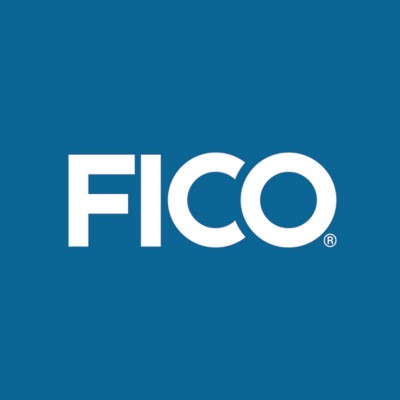The Credit Score Revolution: How Buy Now, Pay Later Loans Are Changing the Game
June 26, 2025, 6:20 pm
The landscape of personal finance is shifting. The winds of change are blowing through the world of credit scores. FICO, the giant that shapes the credit scores of most Americans, is making a bold move. Starting this fall, it will incorporate "buy now, pay later" (BNPL) loans into its scoring models. This is a watershed moment for consumers and lenders alike.
FICO's new scores, dubbed FICO Score 10 BNPL and FICO Score 10 T BNPL, will offer a dual perspective. Lenders can choose to see a score that includes BNPL data or one that does not. This duality provides a fuller picture of a borrower's financial behavior. It’s like looking at a painting from two different angles. Each view reveals something unique.
The rise of BNPL has been meteoric. Transactions are projected to hit $108 billion this year, a significant leap from $94 billion last year. Nearly 86.5 million Americans used BNPL in 2024, a clear sign of its growing acceptance. These loans, often used for everything from electronics to groceries, have become a staple in the consumer finance diet.
But what does this mean for consumers? Historically, BNPL loans have been a double-edged sword. They offer flexibility and immediate gratification without the immediate impact on credit scores. Many users have relished this benefit. In fact, around 40% of BNPL users cite the lack of credit score impact as a top advantage. However, this is about to change.
The new FICO model aims to bring accountability to the BNPL landscape. Many BNPL providers, like Affirm and Klarna, have not reported their loans to credit bureaus. This has allowed users to borrow without the usual checks and balances that come with traditional credit. The absence of hard inquiries and credit checks has created a Wild West of borrowing. Users can easily take on multiple loans, often leading to financial strain.
Data from the Consumer Finance Protection Bureau (CFPB) reveals troubling trends. A significant portion of BNPL users are taking out multiple loans simultaneously. In fact, 63% of users borrowed from multiple lenders in the past year. This behavior raises red flags. It suggests a lack of financial discipline and an increased risk of default.
The new FICO scores aim to address these issues. By incorporating BNPL data, lenders can better assess a borrower's creditworthiness. This is a step toward greater financial responsibility. It’s like adding a safety net to a high-wire act. The goal is to prevent consumers from falling into a debt trap.
Critics, however, are wary. Some financial experts argue that BNPL loans encourage reckless spending. Partnerships between BNPL providers and retailers, like Klarna and DoorDash, blur the lines of responsible borrowing. They make it too easy to finance small purchases that shouldn’t require loans. This can lead to a cycle of debt that is hard to escape.
The reality is that many BNPL users spend more than their non-BNPL counterparts. A recent study found that 41% of BNPL users were late on a payment in the last year. This is a concerning statistic. It highlights the potential pitfalls of BNPL loans. The absence of traditional credit checks can lead to overspending and financial chaos.
So, what does this mean for the average consumer? The introduction of BNPL data into credit scores could be a double-edged sword. On one hand, it may help responsible borrowers build credit. On the other, it could penalize those who struggle with financial discipline. The key lies in how individuals manage their borrowing.
Using credit wisely requires discipline. Whether it’s a credit card or a BNPL loan, the principles remain the same. Consumers must learn to navigate these waters carefully. The new FICO scores will serve as a reminder that borrowing comes with responsibilities.
As the BNPL landscape evolves, consumers must adapt. The era of carefree borrowing is coming to an end. The new FICO scores will shine a light on borrowing behaviors. This could lead to more informed lending decisions. It’s a necessary evolution in a world where financial literacy is paramount.
In conclusion, the integration of BNPL loans into credit scores marks a significant shift in personal finance. It brings both opportunities and challenges. Consumers must be prepared to navigate this new terrain. The stakes are high, but with knowledge and discipline, they can thrive. The future of borrowing is here, and it demands our attention.
FICO's new scores, dubbed FICO Score 10 BNPL and FICO Score 10 T BNPL, will offer a dual perspective. Lenders can choose to see a score that includes BNPL data or one that does not. This duality provides a fuller picture of a borrower's financial behavior. It’s like looking at a painting from two different angles. Each view reveals something unique.
The rise of BNPL has been meteoric. Transactions are projected to hit $108 billion this year, a significant leap from $94 billion last year. Nearly 86.5 million Americans used BNPL in 2024, a clear sign of its growing acceptance. These loans, often used for everything from electronics to groceries, have become a staple in the consumer finance diet.
But what does this mean for consumers? Historically, BNPL loans have been a double-edged sword. They offer flexibility and immediate gratification without the immediate impact on credit scores. Many users have relished this benefit. In fact, around 40% of BNPL users cite the lack of credit score impact as a top advantage. However, this is about to change.
The new FICO model aims to bring accountability to the BNPL landscape. Many BNPL providers, like Affirm and Klarna, have not reported their loans to credit bureaus. This has allowed users to borrow without the usual checks and balances that come with traditional credit. The absence of hard inquiries and credit checks has created a Wild West of borrowing. Users can easily take on multiple loans, often leading to financial strain.
Data from the Consumer Finance Protection Bureau (CFPB) reveals troubling trends. A significant portion of BNPL users are taking out multiple loans simultaneously. In fact, 63% of users borrowed from multiple lenders in the past year. This behavior raises red flags. It suggests a lack of financial discipline and an increased risk of default.
The new FICO scores aim to address these issues. By incorporating BNPL data, lenders can better assess a borrower's creditworthiness. This is a step toward greater financial responsibility. It’s like adding a safety net to a high-wire act. The goal is to prevent consumers from falling into a debt trap.
Critics, however, are wary. Some financial experts argue that BNPL loans encourage reckless spending. Partnerships between BNPL providers and retailers, like Klarna and DoorDash, blur the lines of responsible borrowing. They make it too easy to finance small purchases that shouldn’t require loans. This can lead to a cycle of debt that is hard to escape.
The reality is that many BNPL users spend more than their non-BNPL counterparts. A recent study found that 41% of BNPL users were late on a payment in the last year. This is a concerning statistic. It highlights the potential pitfalls of BNPL loans. The absence of traditional credit checks can lead to overspending and financial chaos.
So, what does this mean for the average consumer? The introduction of BNPL data into credit scores could be a double-edged sword. On one hand, it may help responsible borrowers build credit. On the other, it could penalize those who struggle with financial discipline. The key lies in how individuals manage their borrowing.
Using credit wisely requires discipline. Whether it’s a credit card or a BNPL loan, the principles remain the same. Consumers must learn to navigate these waters carefully. The new FICO scores will serve as a reminder that borrowing comes with responsibilities.
As the BNPL landscape evolves, consumers must adapt. The era of carefree borrowing is coming to an end. The new FICO scores will shine a light on borrowing behaviors. This could lead to more informed lending decisions. It’s a necessary evolution in a world where financial literacy is paramount.
In conclusion, the integration of BNPL loans into credit scores marks a significant shift in personal finance. It brings both opportunities and challenges. Consumers must be prepared to navigate this new terrain. The stakes are high, but with knowledge and discipline, they can thrive. The future of borrowing is here, and it demands our attention.


